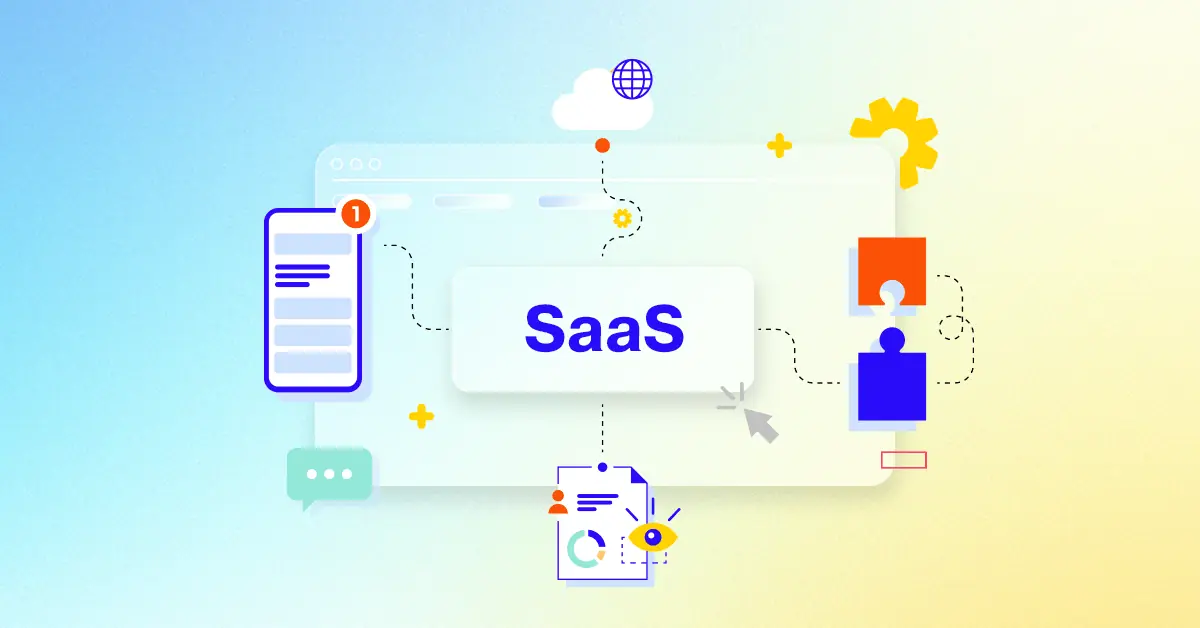In today's digital landscape, where information is readily available at our fingertips, it's crucial to present content in a way that is both engaging and informative. Video content has emerged as a powerful tool for educating new users, offering a dynamic and immersive experience that can effectively convey complex information.
With the increasing demand for video content, it's essential for businesses to invest in creating high-quality, informative videos that cater to the needs of their target audience. By leveraging the power of video, businesses can effectively educate new users, build brand loyalty, and drive conversions. Let's dive in.
Key Takeaways
1. Legrand
Legrand introduces Incara, a range of wiring devices designed for modern workspaces. This video is designed to demonstrate the simple installation process and showcase the seamless integration of Incara into furniture.
Video Design - Incara's video style is clean and straightforward. It features 3D animations with a white background. This aesthetic choice helps focus on the product's features.
Legrand has successfully educated new users about Incara's simple installation process and its seamless integration into various furniture types. The video's 3D animations are visually engaging, showcasing the product's features and functionalities. The clear and concise presentation simplifies the installation process for end users. This approach effectively communicates the ease of use and the product's value proposition.
2. Ortus
Ortus is a telematics solution for airport ground handling operations. The video is designed to highlight the challenges faced by airside operations, safety, and fleet managers, and showcase how Ortus can improve their operations.
Video Design - The video uses a minimalist animation style. Bright, flat colors, a simple design, and clean lines create a modern, visually engaging experience. The focus of the video is on the functionality of the product and how it can be used to solve real-world problems. The animation style is used to capture the attention of the viewer and emphasize the functionality of Ortus.
Ortus successfully educates prospects by demonstrating the everyday challenges faced by airport ground handling operations and then presents their solution. By highlighting the issues faced, the video effectively establishes the need for a solution like Ortus, while the simple, engaging animation keeps the audience engaged. The design style combined with the functionality of the product presented in the video, helps to educate prospects by providing a clear visual representation of the problem and the solution.
3. Adobe Experience Cloud
Adobe Experience Cloud is a platform for data management and governance. This video is designed to explain how Adobe Experience Cloud helps high tech professionals create personalized experiences for customers.
Video Design - The video uses a minimalistic design with bright contrasting colors. The use of icons, outlines, and graphics enhances the visual appeal. The video features a data visualization graphic to help users understand how Adobe Experience Cloud transforms data.
Adobe Experience Cloud wants to boost audience engagement by showcasing the benefits of Adobe Experience Cloud for real-time customer data. The video uses a simple and informative tone that helps viewers understand how to manage customer information. It clearly explains how high tech professionals can leverage real-time data insights to enhance their customer interactions. The video also makes the product more relatable to viewers by including screenshots of Adobe Experience Cloud, the interface of the product and examples of customer profiles. This helps viewers better understand how the platform works, making them more engaged.
4. ENSCO Rail
ENSCO Rail is a company that provides track inspection capabilities for the rail industry. This video is designed to promote their Autonomous Track Geometry Measurement System, which is a cutting-edge solution that helps improve rail safety and efficiency.
Video Design - The video utilizes a simple, clean design style with clear, concise animations and graphics that are easy to understand. The use of brightly colored icons and a minimalist, modern aesthetic effectively showcases the key features and benefits of the product. This style is well suited to an audience of railway professionals who need concise information that is presented in an accessible and informative manner.
ENSCO Rail effectively educates their audience through the use of clear, concise animations and a minimalist, modern aesthetic. The video highlights every aspect of the ATGMS, including its ability to measure and report gauge, cross level, twist, warp, profile, alignment, and curvature, all of which are essential to ensure track safety and efficiency. By focusing on these key technical aspects of the product, ENSCO Rail is able to effectively demonstrate the capabilities of the system to their target audience and show how it can solve their problems. This approach makes the video engaging and informative for viewers and helps them understand the value of the solution.
5. SMC
SMC provides static control solutions that help optimize production efficiency and create a safe work environment for workers. The video is designed to educate viewers on how static electricity can affect their production processes.
Video Design - The video uses a simple and clean design with a white background, minimal graphics, and text overlays. The use of clean, simple graphics, such as the box and the static electricity charges, helps to illustrate the concept in a clear and understandable manner. These graphics are simple but very much on point, visually communicating static electricity charges and the problem it can cause.
SMC has successfully achieved its goal of educating potential buyers about the invisible consequences of static electricity and the importance of static control solutions. By using a simple and informative style, the video effectively communicates the value of SMC's solutions in a concise and engaging way. The video's design and content successfully educate potential buyers about the risks and solutions, helping them make informed decisions about static control.
6. SixSq
SixSq is a company that provides an edge-to-cloud B2B SaaS solution. Their video is designed to introduce the Nuvla.io platform and show how it can help businesses manage their edge infrastructure.
Video Design - The video uses a clean and modern design. It features 2D animated graphics, flat colors, and a light blue background. The animations are simple but effective and the graphics are clear and easy to understand. The video uses a conversational tone and simple language to make it easy for viewers to grasp the key points.
SixSq successfully educated potential clients by presenting the Nuvla.io platform with simple and clear 2D animation. The video uses an easy-to-understand, conversational tone which makes it very approachable for viewers. It clearly explains the platform's features and how it can help businesses address their edge computing challenges. The video highlights the key benefits of using Nuvla.io, such as its cloud neutrality, hardware agnosticism, and application-centric approach. All of this helps potential clients understand how the platform works and its value proposition. The video's focus on real-world scenarios, such as the example of Phil, makes the platform's benefits relatable to potential clients.
7. Anglo Belgian
Anglo Belgian is a company that produces engines for different applications. This video is designed to promote the company’s new Evolve engine.
Video Design - The video is made using 3D animation, with a clean white background and a monochrome color scheme. There are close-ups of the engine parts and components, showing the detailed design of the engine. The video moves from a silhouette to a fully rendered engine in a sleek, futuristic style.
Anglo Belgian has successfully achieved this goal to engage the audience, by using a compelling visual narrative to highlight the features of the new Evolve engine. The video uses animation and close-ups to draw viewers in, and the design is sleek and modern, making it visually appealing and informative. This helps to create a strong connection between the audience and the brand, ultimately boosting audience interaction with the company.
8. Vevox
Vevox is a live polling tool designed to help presenters engage their audience. This video is designed to educate app prospects and convince them to use Vevox.
Video Design - Vevox uses cartoon graphics with a clean and simple design. The video is colorful and uses a blue background, representing a tech-focused product. This approach makes the video engaging and approachable, appealing to a wide audience. The video highlights the benefits of Vevox by showing how it can be used to ask questions, engage in Q&A, and create word clouds, all while being integrated into PowerPoint and MS Teams.
Vevox successfully educates app prospects by visually demonstrating its features and benefits. By highlighting these key features in a straightforward manner, the video effectively communicates Vevox's value proposition and drives interest among potential users. This video helps Vevox attract new users by showcasing the value of interactive experiences in meetings and presentations.
9. GE Lighting
GE Lighting is known for its smart home technology solutions. This video is designed to teach consumers how they can upgrade their current lighting setup to a smart one, on a budget.
Video Design - The video utilizes simple and clean animation. The design includes a blue color scheme with white icons that stand out on a dark background, to represent a sleek and modern aesthetic for smart home technology. The design is simple yet effective, visually engaging for viewers.
GE Lighting has successfully achieved their goal to educate users on how to use smart home technology on a budget. This video uses a clear, simple and concise tone to explain the solution. The use of clear and simple graphics that are easy to understand, along with a straightforward narrative make the video engaging and helpful for viewers who are looking for a smart lighting solution. This video helps to educate potential users on the company's products.
10. Tresorit
Tresorit is a secure content collaboration platform that allows users to store, sync, and share files with enhanced security and privacy. The video is designed to introduce potential buyers to Tresorit and its commitment to safeguarding data in the cloud.
Video Design - Tresorit utilizes a clean and minimalist design style with a bright blue background and simple, flat illustrations. The animated graphics showcase the platform's features and emphasize the importance of data security through images of locks, shields, and skulls representing potential threats. These symbols clearly highlight the potential dangers of unsecured cloud storage.
Tresorit has successfully educated potential buyers by presenting a clear and concise overview of its platform. The use of simple graphics and animation effectively communicates the value proposition of secure file sharing, particularly relevant to users concerned about privacy and data breaches. The video's visual style emphasizes the importance of digital privacy by showcasing security measures, effectively attracting the attention of potential users seeking a secure and reliable cloud collaboration solution.
Informative Video Definition
Informative Video Definition
An informative video aims to educate viewers on a specific topic, providing knowledge and insights in a clear and engaging way. Unlike entertainment or promotional videos, informative videos prioritize accuracy, objectivity, and clarity. They often follow a structured format, presenting information logically and using visuals to enhance understanding.
Informative videos can take various forms, including documentaries, explainer videos, tutorials, and educational lectures. Documentaries delve deep into a subject, while explainer videos simplify complex concepts. Tutorials provide step-by-step instructions, and educational lectures offer in-depth knowledge on a particular topic. Each format serves a unique purpose in delivering information effectively.
Educational Video Types
Educational Video Types
Several video types cater specifically to educating new users, each with a unique approach. Explainer videos offer concise overviews of a product or service, highlighting key features and benefits. For example, a software company might use an explainer video to demonstrate the core functionalities of their platform.
Tutorial videos provide step-by-step instructions on how to use a product or service. Imagine a tutorial video guiding new users through setting up their email accounts and navigating the interface. Demo videos showcase the product or service in action, highlighting its practical applications. A demo video might show a user creating a website using a website builder tool.
Onboarding videos guide new users through the initial setup and use of a product or service, ensuring a smooth start. A social media platform might use an onboarding video to explain profile customization and privacy settings. Training videos offer in-depth instruction on specific topics or skills related to the product or service. A training video could teach users advanced features of a photo editing software.
High-Quality Video Impact
High-Quality Video Impact
High-quality videos are crucial for new users as they can significantly impact their initial experience and long-term engagement. New users often face challenges like unfamiliarity with the product, lack of confidence, and potential frustration. Well-crafted videos can address these challenges directly.
Engaging videos capture attention and make learning enjoyable, reducing the feeling of being overwhelmed. Clear and concise explanations build confidence and empower users to navigate the product effectively. High-quality visuals and professional production demonstrate credibility and build trust in the brand. Ultimately, high-quality videos contribute to a positive first impression, increased user retention, and a smoother onboarding experience.
Video-Driven Onboarding
Video-Driven Onboarding
Video content can transform user onboarding, making it more engaging and effective. Welcome videos set a positive tone by introducing the product or service and its key features. Imagine a welcome video that highlights the benefits of a project management tool and showcases its user-friendly interface.
Tutorial videos provide step-by-step guidance on using the product or service, addressing common questions and challenges. A tutorial video could demonstrate how to create a new project, assign tasks, and track progress within the tool. Interactive videos incorporate quizzes or polls to keep users engaged and assess their understanding. An interactive video might ask users to identify the correct steps for creating a task list.
Personalized onboarding uses video to tailor the experience to individual user needs and preferences. A language learning app could offer different onboarding videos based on the user's chosen language and learning goals. By integrating video strategically, you can create a more engaging, informative, and personalized onboarding experience.
Successful Video Strategy
Successful Video Strategy
A successful video content strategy for new users requires careful planning and execution. Clear goals are essential, whether it's increasing user engagement, driving conversions, or improving customer satisfaction. Define what you want to achieve with your videos.
Understanding your target audience is crucial. Consider their demographics, needs, and preferences when creating content. Compelling storytelling can make your videos more engaging and memorable. Use narratives, examples, and relatable scenarios to connect with your audience.
A clear call to action guides viewers on what to do next, whether it's signing up for a free trial or exploring specific features. Consistent branding across all videos reinforces your brand identity and builds recognition. By incorporating these elements, you can create a video content strategy that effectively educates and engages new users.
Boost User Engagement
Boost User Engagement
Video offers a dynamic way to capture and maintain user attention. Visuals play a key role. Incorporate eye-catching animations, motion graphics, and real-life footage to make your videos visually appealing.
Keep it concise. Attention spans are short, so deliver your message efficiently. Humor, when appropriate, can make your videos more enjoyable and memorable. A funny anecdote or a lighthearted animation can leave a lasting impression.
Encourage interaction by asking questions, prompting comments, or running contests. This fosters a sense of community and encourages viewers to actively participate. By implementing these techniques, you can create videos that resonate with your audience and keep them coming back for more.
Engaging Video Best Practices
Engaging Video Best Practices
Engaging video content for new users requires a strategic approach. Start with a strong hook to grab the viewer's attention immediately. Pose a question, present a surprising statistic, or use a compelling visual to pique their interest.
Use clear and concise language that is easy for new users to understand. Avoid jargon or technical terms they might not be familiar with. Break down complex information into smaller, digestible chunks. Use visuals like diagrams, charts, and animations to illustrate your points and make them easier to grasp.
By following these best practices, you can create videos that are both informative and engaging, ensuring that new users understand and retain the information you're presenting.
Video-Driven Conversions
Video-Driven Conversions
Video can be a powerful tool for driving conversions by effectively communicating the value of your product or service. Showcase the benefits clearly and concisely, highlighting how your offering solves a specific problem or fulfills a need.
Include a clear call to action that tells viewers what you want them to do next, whether it's signing up for a free trial, making a purchase, or requesting a demo. Use testimonials from satisfied customers to build trust and credibility. Seeing real people share their positive experiences can be very persuasive.
Target specific audiences with tailored video content that addresses their unique needs and interests. By aligning your video content with your sales funnel and focusing on the customer's journey, you can effectively use video to drive conversions and achieve your business goals.
Successful Video Campaigns
Successful Video Campaigns
Several video marketing campaigns have excelled at educating and engaging new users. Dropbox's "How Dropbox Works" video is a prime example. It uses simple animations and clear explanations to demonstrate the core functionality of Dropbox, making it easy for new users to understand its value proposition.
Mailchimp's "Welcome to Mailchimp" video provides a warm and friendly introduction to the platform, guiding new users through the basics of creating and sending email campaigns. Its lighthearted tone and helpful tips create a positive first impression.
HubSpot's "Inbound Marketing for Beginners" video series offers valuable insights into inbound marketing concepts, catering to a wider audience interested in learning about this marketing approach. By analyzing these successful campaigns, we can learn valuable lessons about creating effective video content for new users.
Video Brand Awareness
Video Brand Awareness
Video can be a powerful tool for building brand awareness and establishing a strong brand identity. Create engaging brand videos that showcase your brand personality, values, and mission. Use storytelling, visuals, and music to create an emotional connection with your audience.
Leverage social media platforms to share your videos and reach a wider audience. Optimize your videos for each platform and encourage sharing and engagement. Run video ads on platforms like YouTube and Facebook to target specific demographics and interests.
Partner with influencers in your industry to promote your brand videos and reach their followers. By implementing these strategies, you can effectively use video to increase brand visibility, build brand recognition, and establish a strong brand presence in the market.
Video Customer Support
Video Customer Support
Video can significantly enhance customer support by providing visual and engaging solutions. Create how-to videos that address common customer issues with step-by-step instructions. Imagine a video demonstrating how to reset a password or troubleshoot a technical problem.
Use video chat to offer personalized assistance in real-time. This allows for face-to-face interaction, making it easier to understand and resolve customer issues. Record screencasts to demonstrate how to use specific features or navigate through your product or service.
Create video FAQs to answer frequently asked questions in a visually engaging format. By incorporating video into your customer support strategy, you can improve customer satisfaction, reduce support costs, and provide a more efficient and effective support experience.
Video Lead Generation
Video Lead Generation
Video can be a highly effective tool for generating leads and capturing valuable contact information. Create lead magnets by offering valuable video content, such as webinars or tutorials, in exchange for viewers' email addresses or other contact details.
Use video ads on platforms like YouTube and Facebook to target potential leads based on their interests and demographics. Include a clear call to action in your videos, encouraging viewers to take the next step, such as signing up for a free trial or downloading a white paper.
Use landing pages specifically designed for your video content to capture leads and provide more information about your product or service. By strategically using video in your lead generation efforts, you can attract qualified leads and nurture them through the sales funnel.
Video Customer Satisfaction
Video Customer Satisfaction
Video can play a key role in improving customer satisfaction by providing a more personalized and engaging experience. Create personalized videos to send tailored messages to customers, such as birthday greetings or thank-you notes. This shows that you value their business and appreciate their loyalty.
Offer video tutorials to help customers learn how to use your products or services effectively. This empowers them to get the most out of their purchase and reduces frustration. Use video chat for support to provide a more personal and interactive support experience.
Share customer success stories through video testimonials or case studies. This builds trust and credibility by showcasing how your products or services have helped other customers achieve their goals. By incorporating video into your customer satisfaction strategy, you can build stronger relationships with your customers and foster greater loyalty.
Video Sales Boost
Video Sales Boost
Video can be a powerful sales tool, helping you showcase your products or services in a compelling and persuasive way. Create product demos that highlight the key features and benefits of your offerings. Use visuals, demonstrations, and customer testimonials to showcase the value proposition.
Use video sales calls to build rapport with potential customers and provide personalized demonstrations. This allows for face-to-face interaction and can be more effective than traditional phone calls. Share customer testimonials in your sales materials to build trust and credibility.
Use video retargeting to reach potential customers who have previously interacted with your website or social media. Show them targeted video ads that remind them of your products or services and encourage them to take the next step. By strategically using video throughout the sales process, you can increase conversion rates and drive revenue growth.
Video Cost Reduction
Video Cost Reduction
Video can be a valuable asset in reducing support costs by empowering customers to self-serve and reducing the need for live support interactions. Create how-to videos that address common customer issues with clear and concise instructions. This allows customers to find solutions independently, reducing the volume of support calls and emails.
Use video FAQs to answer frequently asked questions in a visually engaging format. This provides a readily available resource for customers seeking quick answers to common queries. Offer video tutorials to help customers learn how to use your products or services effectively, reducing the need for personalized support.
Use video chat for support when necessary, allowing for more efficient and effective troubleshooting. By implementing these strategies, you can leverage video to reduce support costs, improve customer satisfaction, and free up your support team to focus on more complex issues.
Video Knowledge Sharing
Video Knowledge Sharing
Video can be a powerful tool for improving knowledge sharing within an organization, fostering collaboration and ensuring that information is readily accessible. Create training videos to teach employees new skills, processes, or procedures. This provides a consistent and engaging learning experience for all team members.
Record product demos to showcase new features or updates to your products or services. This allows employees to stay informed about the latest developments and effectively communicate them to customers. Share company updates through video announcements or town hall meetings. This fosters transparency and keeps employees informed about important company news and initiatives.
Create onboarding videos to welcome new employees and introduce them to the company culture, values, and processes. This helps new hires integrate into the team more quickly and effectively. By incorporating video into your knowledge sharing strategy, you can improve communication, foster collaboration, and ensure that everyone has access to the information they need to succeed.
Video User Adoption
Video User Adoption
Video can play a crucial role in increasing user adoption by providing a more engaging and informative experience for new users. Create onboarding videos that guide new users through the initial setup and use of your product or service. This helps them get started quickly and easily, reducing the learning curve.
Offer product demos that showcase the key features and benefits of your product or service in a compelling way. This helps users understand the Value Proposition and how it can solve their specific needs. Use video tutorials to help users learn how to use specific features or functions of your product or service. This provides targeted guidance and empowers users to explore the full potential of your offering.
Share customer success stories through video testimonials or case studies. This builds trust and credibility by showcasing how your product or service has helped other users achieve their goals. By incorporating video into your user adoption strategy, you can create a more positive and engaging experience for new users, leading to increased adoption rates and long-term customer loyalty.
Video Product Understanding
Video Product Understanding
Video excels at simplifying complex information and making it more digestible. This is crucial for improving product understanding, as it allows potential customers to grasp the value proposition quickly and easily.
Explainer videos are a powerful tool for providing concise overviews of your product or service. They can highlight key features, address common questions, and demonstrate the problem your product solves.
Product demos offer a more in-depth look at your product in action. They can showcase functionality, user experience, and benefits in a visually engaging way. For example, a software company might use a screen recording to demonstrate how their product simplifies a specific task.
Video tutorials cater to users who prefer a hands-on approach to learning. They provide step-by-step instructions on how to use specific features or functions, empowering users to get the most out of your product.
By leveraging the visual nature of video, you can cater to different learning styles and ensure that your message resonates with a wider audience, ultimately leading to a deeper understanding of your product's value.
Video Brand Trust
Video Brand Trust
Trust is the foundation of any strong brand, and video offers a unique opportunity to build that trust through authenticity and transparency.
Behind-the-scenes videos give your audience a glimpse into your company culture, values, and processes. This humanizes your brand and fosters a sense of connection with your customers. For instance, a sustainable clothing brand might create a video showcasing their ethical manufacturing practices and the people behind their products.
Customer testimonials provide powerful social proof. Seeing real people share their positive experiences with your brand can significantly influence potential customers' purchasing decisions.
Addressing customer concerns directly through video demonstrates your commitment to transparency and customer satisfaction. This can be done through Q&A videos, addressing common FAQs, or responding to specific customer feedback.
By being genuine and transparent in your video content, you can build a strong foundation of trust that will foster long-term customer relationships.
Video Customer Loyalty
Video Customer Loyalty
Video can be a powerful tool for nurturing customer relationships and fostering loyalty. By creating personalized and engaging experiences, you can make your customers feel valued and appreciated.
Personalized videos go beyond generic marketing messages. They allow you to connect with customers on an individual level. Imagine sending a customer a birthday greeting video with a special discount code – a simple gesture that can make a big impact.
Exclusive video content makes your loyal customers feel like VIPs. This could include behind-the-scenes footage, early access to new products, or special interviews.
Rewarding loyal customers through video can be a creative and memorable way to show your appreciation. You could create a video highlighting a "customer of the month" or showcase customer success stories.
By using video to personalize the customer experience and demonstrate your appreciation, you can build stronger relationships and foster lasting loyalty.
Video Customer Retention
Video Customer Retention
Customer retention is essential for sustainable business growth. Video can play a key role in reducing churn by providing engaging and informative experiences that keep customers invested in your product or service.
Onboarding videos are crucial for guiding new users through the initial setup and use of your product. They can help users quickly understand the value proposition and avoid frustration during the early stages of adoption.
Product demos can be repurposed for existing customers to highlight new features or remind them of the benefits they're already enjoying. This can prevent users from feeling stagnant and encourage them to explore more of what your product has to offer.
Video tutorials provide ongoing support and empower users to solve problems independently. This reduces the need for customer support interactions and fosters a sense of self-sufficiency.
By using video to provide ongoing support and education, you can improve customer satisfaction, reduce churn, and build a loyal customer base.
Video Revenue Growth
Video Revenue Growth
Video's ability to engage and persuade makes it a powerful tool for driving sales and boosting revenue.
Product demos can be optimized for conversions by clearly highlighting the benefits of your product and including a strong call to action. For example, an e-commerce store might create a product demo video that showcases the features of a new clothing item and encourages viewers to "shop now."
Video sales calls allow you to build rapport with potential customers in a more personal and engaging way than traditional phone calls. This can lead to higher conversion rates and increased deal sizes.
Customer testimonials can be incorporated into your sales materials to build trust and credibility. Seeing real people vouch for your product can be a powerful motivator for potential buyers.
Video retargeting allows you to re-engage potential customers who have previously interacted with your website or social media. By showing them targeted video ads, you can remind them of your product and encourage them to complete a purchase.
By strategically incorporating video into your sales and marketing efforts, you can effectively drive revenue growth.
Video Marketing Funnel
Video Marketing Funnel
A well-structured marketing funnel guides potential customers through the stages of awareness, consideration, decision, and retention. Video can be a powerful tool at each stage, providing engaging content that resonates with your target audience.
Awareness: Use brand story videos, explainer videos, or social media clips to introduce your brand and capture the attention of potential customers.
Consideration: Provide educational videos, product comparison videos, or webinars to educate potential customers about your product or service and its benefits.
Decision: Leverage customer testimonial videos, product demo videos, or case studies to build trust and encourage potential customers to make a purchase.
Retention: Use how-to videos, FAQ videos, or behind-the-scenes content to nurture existing customers and encourage repeat business.
By aligning your video content with the specific goals of each stage of the funnel, you can create a seamless and effective customer journey that drives conversions and fosters loyalty.
Video Customer Journey
Video Customer Journey
A seamless customer journey is essential for building strong customer relationships and fostering loyalty. Video can enhance the customer experience at every touchpoint, creating a more engaging and informative journey.
Onboarding: Welcome new customers with personalized onboarding videos that guide them through the initial setup and use of your product or service. This can help reduce churn and improve customer satisfaction.
Support: Provide self-service support options through video tutorials and FAQ videos. This empowers customers to solve problems independently and reduces the need for live support interactions.
Marketing: Use video to promote your products or services and engage potential customers. This could include product demos, explainer videos, or social media content.
Sales: Incorporate video into your sales process to build rapport with potential customers and close deals. This could involve video sales calls, product demos, or customer testimonial videos.
By strategically integrating video throughout the customer journey, you can create a more consistent, engaging, and informative experience that fosters loyalty and drives business growth.
Video Audience Targeting
Video Audience Targeting
Video platforms offer powerful targeting options that allow you to reach specific audience segments with your content.
Demographics: Target your videos based on age, gender, location, education level, and other demographic factors. For example, a fitness brand might target their workout videos to women aged 25-4who are interested in yoga.
Interests: Reach audiences based on their interests, such as hobbies, sports, or technology. A cooking channel might target their recipe videos to people who are interested in vegan cuisine.
Behavior: Target audiences based on their online behavior, such as website visits or social media interactions. A software company might retarget users who have visited their pricing page with a demo video.
Retargeting: Re-engage audiences who have previously interacted with your brand. For example, you could show a product demo video to someone who has added an item to their cart but hasn't completed the purchase.
By leveraging these targeting options, you can ensure that your videos are seen by the right people, maximizing your reach and impact.
Compelling Visual Experience
Compelling Visual Experience
Video offers a unique opportunity to create visually captivating experiences that engage your audience and leave a lasting impression.
High-quality visuals: Use high-resolution images and videos to create a professional and polished look. This demonstrates your attention to detail and enhances the overall viewing experience.
Color: Use color strategically to evoke specific emotions and create a consistent brand identity. For example, a calming blue might be used for a meditation app, while a vibrant red might be used for an energy drink.
Motion graphics: Add visual interest and movement to your videos with motion graphics. This can be used to highlight key information, create transitions, or add a touch of animation.
Animation: Bring your videos to life with animation. This can be used to explain complex concepts, tell stories, or simply add a fun and engaging element to your content.
By carefully considering the visual elements of your videos, you can create a compelling and memorable experience for your audience.
Video Use Case Leverage
Video Use Case Leverage
Different types of videos serve different purposes. By understanding the strengths of each format, you can leverage them effectively to achieve your specific goals.
Explainer videos: simplify complex concepts and introduce new products or services. They are ideal for capturing attention and conveying key information concisely.
Tutorial videos: Empower users by teaching them how to use a product or service. They can be used for onboarding, troubleshooting, or providing advanced tips and tricks.
Demo videos: Showcase the features and benefits of a product or service in action. They are particularly effective for visually demonstrating functionality and user experience.
Onboarding videos: Guide new users through the initial setup and use of a product or service. They can help reduce churn and improve customer satisfaction.
Training videos: Educate employees on new skills, processes, or company policies. They can be used for onboarding, professional development, or compliance training.
By strategically choosing the right video type for each use case, you can maximize the impact of your video content and achieve your desired outcomes.
Short-Form Video Content
Short-Form Video Content
Short-form video content has exploded in popularity on social media platforms like TikTok, Instagram Reels, and YouTube Shorts. To succeed in this fast-paced environment, your videos need to be concise, engaging, and visually appealing.
Keep it short: Aim for videos under 60 seconds, or even shorter depending on the platform. Capture attention quickly and deliver your message efficiently.
Strong hook: Grab the viewer's attention in the first few seconds with a compelling opening. Use visuals, music, or a surprising statement to pique their interest.
Visual storytelling: Use visuals to illustrate your points and make your content more memorable. Show, don't just tell.
Call to action: Encourage viewers to take the next step, such as visiting your website, following you on social media, or making a purchase.
By following these tips, you can create short-form video content that resonates with your target audience and drives results on social media.
Video Channel Integration
Video Channel Integration
Video can be seamlessly integrated into your existing marketing channels to enhance their effectiveness and reach a wider audience.
Email marketing: Include video thumbnails or animated GIFs in your email newsletters to increase open and click-through rates. Embed videos on landing pages to provide more engaging content and improve conversions.
Social media: Share your videos on all your social media platforms. Optimize your videos for each platform's specific requirements and leverage social media advertising to reach a wider audience.
Website: Embed videos on your website's homepage, product pages, or blog posts to provide more engaging content and improve user experience.
Paid advertising: Run video ads on platforms like YouTube and Facebook to target specific audiences and drive traffic to your website or landing pages.
By strategically integrating video into your existing marketing channels, you can create a more cohesive and impactful marketing strategy.
Video Campaign Effectiveness
Video Campaign Effectiveness
Tracking the right metrics is crucial for understanding the impact of your video marketing efforts.
Views: Measure the number of times your video has been viewed. This provides a basic indication of reach and awareness.
Engagement: Track likes, comments, and shares to gauge audience interaction and interest. High engagement suggests that your content is resonating with viewers.
Click-through rate (CTR): Measure the percentage of viewers who click on a call to action in your video. This indicates the effectiveness of your video in driving traffic to your website or landing page.
Conversions: Track the number of viewers who take a desired action after watching your video, such as making a purchase or signing up for a free trial. This is the ultimate measure of your video's success in driving business results.
By analyzing these metrics, you can gain valuable insights into the effectiveness of your video marketing campaigns and make data-driven decisions to optimize your strategy.
Winning Video Strategy
Winning Video Strategy
Video can be a cornerstone of a successful content strategy, providing engaging and informative content that attracts and retains your target audience.
Define your goals: Start by clearly defining what you want to achieve with your video content. Do you want to increase brand awareness, drive sales, or educate your audience?
Understand your audience: Research your target audience's needs, interests, and preferences. What type of video content are they most likely to engage with?
Content calendar: Plan your video content in advance using a content calendar. This ensures consistency and helps you align your videos with your overall marketing goals.
Promote your videos: Share your videos on all relevant platforms, including social media, email, and your website. Optimize your video titles, descriptions, and tags for search engines.
Track your results: Monitor your video performance metrics and make adjustments to your strategy as needed.
By following these steps, you can create a winning content strategy that leverages the Power of Video to achieve your marketing goals.
Video A/B Testing
Video A/B Testing
A/B testing is a valuable technique for optimizing your video content and improving its performance.
Create variations: Develop two or more versions of your video with slight variations. For example, you could test different calls to action, video lengths, or thumbnail images.
Testing tools: Use A/B testing tools or platforms to randomly show different versions of your video to different viewers.
Track performance: Monitor key metrics such as views, engagement, CTR, and conversions for each version of your video.
Analyze results: Identify which version of your video performs best based on your chosen metrics. Implement the winning variation to improve your video's overall effectiveness.
By conducting A/B tests, you can gain valuable insights into what resonates with your audience and optimize your video content for maximum impact.
Video Audience Research
Video Audience Research
Video can be a valuable tool for gathering insights into your target audience's needs, preferences, and behaviors.
Video surveys: Create interactive video surveys to gather feedback from your target audience. This allows you to collect both quantitative and qualitative data in a more engaging format than traditional text-based surveys.
Focus groups: Record focus group sessions using video to capture nonverbal cues and gain a deeper understanding of your target audience's thoughts and feelings.
Analyze video engagement: Track video engagement metrics such as watch time, drop-off rates, and comments to understand which topics and formats resonate most with your audience.
Social listening: Monitor social media conversations about your brand or industry using video analytics tools. This can provide valuable insights into your target audience's interests, concerns, and pain points.
By leveraging video for audience research, you can gain a deeper understanding of your target market and tailor your marketing efforts accordingly.
Video Creation Planning
Video Creation Planning
Video can be used throughout the video creation process to improve organization, collaboration, and efficiency.
Pre-planning: Use video to create storyboards that visualize the flow of your video. This helps you plan your shots, transitions, and overall narrative. You can also use video to record and edit scripts for your videos, ensuring clarity and consistency.
Production planning: Use video to plan video shoots, including location scouting, talent acquisition, and equipment selection. You can create shot lists and walkthrough videos to ensure that everyone is on the same page.
Post-production: Use video editing software to edit and post-produce your videos, including adding music, graphics, and special effects. You can also use video to create trailers and teasers to promote your upcoming videos.
By incorporating video into your pre-planning and post-planning processes, you can streamline your workflow, improve communication, and create higher-quality videos.









